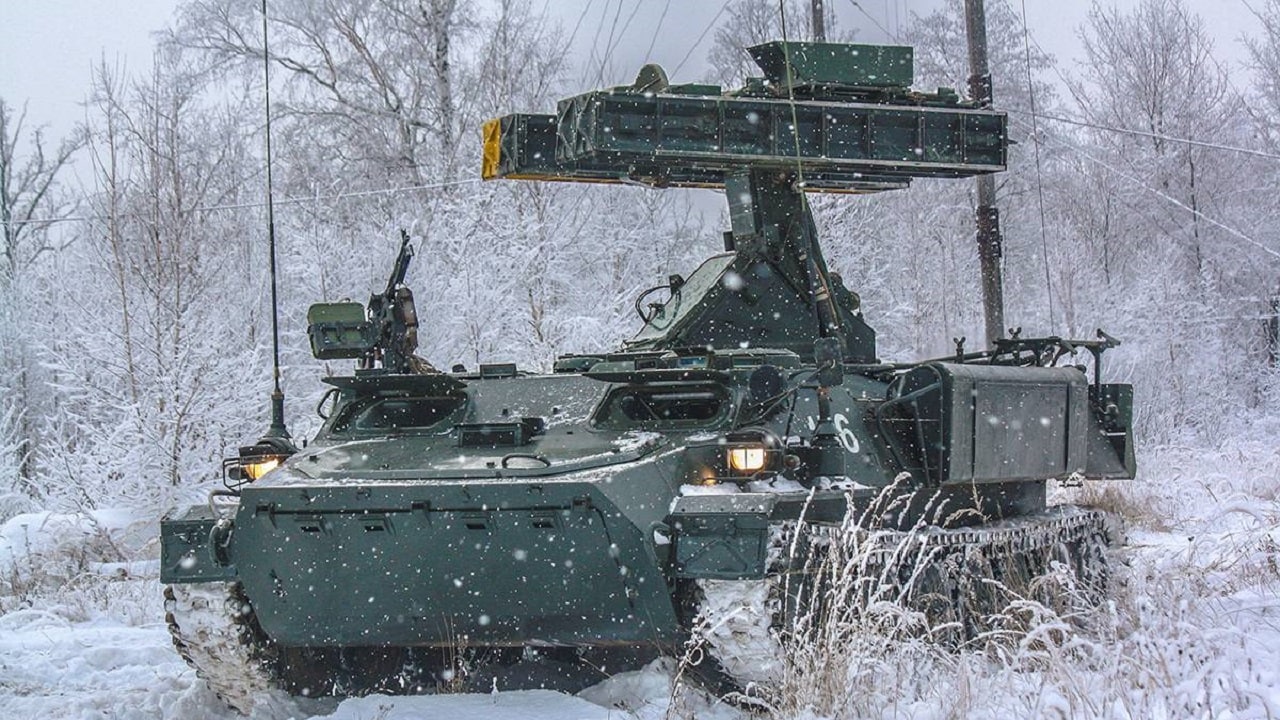Russia’s Planned Ptitselov Vehicle Would Shoot Down Aircraft Using Ultra-Fast Laser-Guided Missiles – Had the Cold War turned hot in the 1980s, one of the greatest threats to the Soviet Union’s formidable mechanized divisions would have come from NATO airpower, particularly Apache helicopters and A-10 Thunderbolt jets each potentially loaded with enough anti-tank missiles to annihilate an entire company of armored vehicles.
To contain that threat, the Soviet Union developed a variety of self-propelled short-range gun and missile systems to cover the troops—system which modern Russian ground forces continue to rely on today.
Of course, the threat environment has changed. Today, NATO warplanes would mostly rain down precision-guided munitions from high altitudes to avoid short-range air defenses. But helicopters haven’t gone away, and they are now joined at low altitude by tactical drones, kamikaze drones, and cruise missiles.
Thus, in the 2020s Moscow is hoping to recapitalize its legacy short-range air defense systems—including its 9K35 Strela-10 vehicle, codenamed SA-13 Gopher by NATO.
Currently, Russian motor-rifle brigades/regiments often have two anti-aircraft battalions. One is equipped entirely with tracked Tor systems effective again aircraft flying up to medium altitude. The other is a gun/missile battalion focused on shorter-range defense, with a battery each of self-propelled anti-aircraft guns, man-portable missiles (MANPADS), and tracked Strela-10M3s.
The first Strela-10s entered Soviet service back in 1976, pairing the ubiquitous MT-LB tracked APC hull with an optical sensor and four boxy missile launchers. Today, Russian Ground Forces and VDV paratrooper use the Strela-10M3 and M4 variants armed with 9M37M or 9M333 missiles with a range of 3 miles and a maximum altitude of 11,500 feet. Accelerating up to Mach 1.5, these missile use dual infrared/color-contrast seekers to home in on aerial targets.
While Iraqi SA-13s downed two A-10 Thunderbolt jets during the 1991 Gulf War, the type faired poorly against Turkish-built Bayraktar drones during the 2020 Nagorno-Karabakh conflict (three destroyed, no kills in return), being unable to engage drones flying above 20,000 feet.
Now Russia is developing two new tracked vehicles aptly called Ptitselov (“Fowler”) to replace the Gopher in providing 24-hour local air defense coverage to paratrooper, tank and mechanized infantry units.
While the Ground Forces will receive a version on the chassis of a BMP-3 fighting vehicle, the originally envisioned airborne variant will use the lighter air-droppable BMD-4M (it’s been billed as the world’s first parachute-capable air defense vehicle).
Though a simplified Pantsir turret was considered for mounting on the Ptitselov, reportedly the cheaper Sosna-R (“Pine”) system will be used instead. The Sosna carries twelve laser-guided 9M340 missiles with a maximum speed of Mach 2.6, range of 10 kilometers (6.2 miles) and altitude of 16,000 feet, characteristics 50-100% improved over the Gopher’s. The turret-based Sosna has already been displayed mounted on the hull of a BMP-3 tracked fighting vehicle, MT-LB tracked APC, and BTR-82 wheeled APC.
Like the forthcoming 2S38 self-propelled anti-aircraft gun, Ptitselov will rely on passive electro-optical sensors rather than radar, sacrificing range for stealth and surprise, as many aircraft lack laser-warning systems/receivers (LWR or LWS) that could warn them they are being targeted. However, some critics note a downside of laser-targeting is that degraded visibility from smoke, fog, rain and cloud cover can prevent targeting.
The Fowler’s electrooptical sensors allegedly can detect airplanes up to 30 kilometers away and helicopters or incoming missiles out to 12-14 kilometers, and would reportedly use an image processing AI to classify detected helicopters, airplanes, cruise missiles or drones, and engage those that don’t appear to be friendly. A targeting laser on the vehicle automatically tracks the indicated target, steering a 9M340 missile “riding” the laser beam, with interception likely to occur within 10 seconds of launch. A datasheet for the BMD-4M variant claims it can engage a detected target within 5-8 seconds, even while on the move, and that the missile can be reloaded manually in 12 minutes.
However, Russian state media reports the Fowler will also use an unspecified infrared missile. Though generally more expensive than laser-guided weapons and susceptible to certain countermeasures, infrared-guided missiles would be compatible with an electro-optical targeting system, remain effective in low-visibility conditions, and allow fire-and-forget engagement.
But which missile would then be integrated into the Fowler? The most expedient option would be the shorter-range but familiar 9M37 missile already used on the SA-13. However, some sources suggest a longer-range missile may be fitted on the Ground Force’s heavier BMP-3 vehicle.
Regardless, given years of delays fielding the Ptitselov despite the apparent adoption of the developed Sosna-R turret, some commentators believe significant modifications to the Sosna/hull pairing are being made—perhaps to integrate the infrared missile, or to otherwise improve performance—that have delayed development and procurement.
Currently, the VDV paratrooper branch’s four divisional anti-aircraft regiments will reportedly receive the first Ptitselov in 2024, not 2022 as originally claimed. The Army’s potentially more capable version would come later as it is in an earlier stage of development.
Even with its nearly 50% improved engagement ceiling of 15,000 feet, the Fowler still doesn’t present a threat to high-flying missile-armed drones like the Bayraktar or warplanes releasing precision-guided missiles and bombs. However, its fast laser-guided missiles could be quite dangerous to low-flying aircraft like attack helicopters, especially if they lack laser-warning receiver.
While infrared- and radar-guided weapons have traditionally posed the greatest threat to aircraft, systems like the Fowler may compel more systematic integration of LWRs onto combat aircraft, particularly helicopters, expected to be in harm’s way at lower altitudes.
Sébastien Roblin writes on the technical, historical and political aspects of international security and conflict for publications including the 19FortyFive, The National Interest, NBC News, Forbes.com and War is Boring. He holds a Master’s degree from Georgetown University and served with the Peace Corps in China. You can follow his articles on Twitter.

